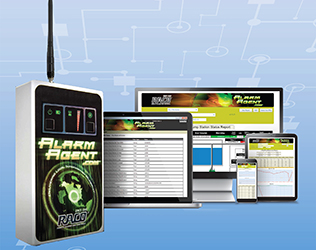
Choosing the right communication platform for remote monitoring
Mike Edwards
Features cloud communications RACO remote monitoring
For decades, municipalities, utilities, manufacturing organizations and others have used remote terminal unit (RTU) technology to facilitate the alarm notification, monitoring, data logging and maintenance functions of unattended equipment.
During this time, the preferred method of communicating with an RTU was landline technology. However, widespread adoption of M2M wireless and cloud-based technologies has enabled data transfer that gives organizations more options to consider. Today’s alarm systems can even integrate with an organization’s existing supervisory control and data acquisition (SCADA) systems to unlock advanced functionality, including real-time updates and in-depth visualizations.
To ensure the appropriate platform is chosen, the decision-maker must establish and carefully evaluate a clearly defined set of business objectives, application requirements and communication delivery criteria. Neglecting to do so may lead to critical equipment failures going unreported—with significant consequences.
The purpose of this white paper is to present information that will assist in the process of choosing the proper communication platform. It includes a background of the remote monitoring systems market, an overview of each communication platform, a comparative analysis chart and key questions to ask yourself when making a decision.
All remote monitoring systems described in this paper depend on one of three communication platforms: landline, cellular wireless or M2M wireless.
Download the original white paper, Information Delivery for Remote Monitoring Systems: An Analysis of Communication Platforms, here.
Print this page